TechRadar Verdict
The combination of U.2 NVMe technology and Thunderbolt appears to be an unbalanced one. Without additional software not included by default, the performance isn’t anything special, and even with this enhancement, internal drives are faster.
Pros
- +
M.2 and U.2 external drives
- +
Easily relocatable
Cons
- -
Thunderbolt bandwidth
- -
U.2 is expensive
- -
Software RAID costs extra
Why you can trust TechRadar
Most PC and Mac owners are generally aware of M.2 NVMe SSD technology and appreciate the performance boost that it can deliver.
However, one issue with M.2 drives is the physical scale of the M.2 2280 form factor. This surface area limits the number of NAND modules that can be easily mounted on it, currently topping out at 8TB.
Most NVMe makers don’t offer drives bigger than 4TB, and some stop at 2TB.
Realising that larger drives might sell more Flash modules, makers have produced a new specification called U.2 that provides more space for modules and, therefore, much greater capacities.
Always are the pointy end of storage developments, OWC has sent up over a product designed to exploit U.2 technology for rapid external storage.
The Mercury Pro U.2 is a Thunderbolt connected external drive enclosure with the ability to accept two U.2 drives and use them in a RAID configuration.
Is this the ultimate in external storage, a massive hole in your bank account, or a bit of both?
Sign up to the TechRadar Pro newsletter to get all the top news, opinion, features and guidance your business needs to succeed!
Price
OWC offers this unit either as a bare drive or with pre-installed U.2 drives, and they also intend to sell it with OWC SoftRAID module in the future.
A bare Mercury Pro Dual unit costs $299.99 or $379.00 if you get it with a SoftRAID license.
Mercury Pro designs with U.2 storage include versions come in 2TB (2x1TB), 4TB(2x2TB), 8TB(2x4TB), 16TB(2x8TB), and they cost $498, $679, $948 and $2,448 respectively.
These are currently available for purchase, and promised soon are the SoftRAID NVMe M.2 derivatives. These will offer 8TB (8x1TB), 16TB (8x2TB), 32TB (8x4TB), 64TB (8x8TB), and these are priced at $2199, $3499, $7499 and an eye-watering $12799 for the biggest capacity.
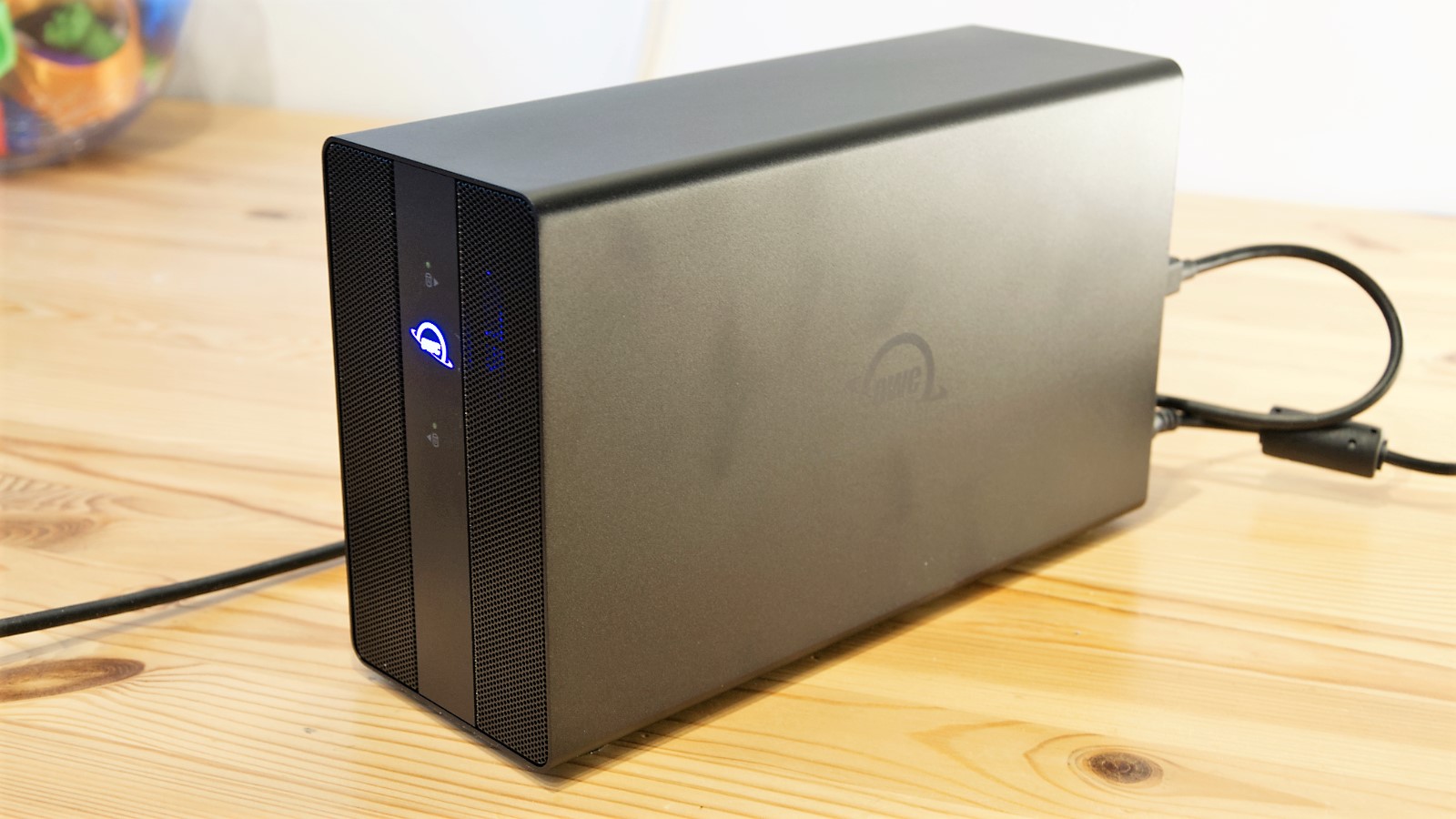
Design
External drive boxes aren’t an exercise in style these days. The Mercury Pro Dual uses an enclosure that is remarkably close to one OWC previously used for its Gemini SATA external drive solution.
This design exudes a minimalist aesthetic where the painted black aluminium tube has just some activity LEDs on the front, along with some grill vents to allow air to circulate. The few ports it has are all on the rear, and there is no power switch.
Once the enclosure is connected to the provided 10A/120W PSU and a power cord, it’s on.
As this is a Thunderbolt connected solution, two USB-C Thunderbolt ports are on the back, and a Type-C Thunderbolt cable is provided in the box to connect it to the computer.
The inclusion of two ports allows for the daisy-chaining of Thunderbolt devices, allowing a single port on the computer to be distributed to more than one device.
On the back is a Kensington security slot, so you can chain this hardware down, and there is also a grill behind which a 50mm fan blows air out to cool the drives and electronics.
As we mentioned earlier, this drive can come ‘barebones’, or like our review hardware, they can come with two drives pre-installed.
Access to the internal bays is via two screws on the back. Once removed, the internal cradle on which the drives are mounted slides out, allowing drives to be installed or replaced.

You aren’t forced to install both drives, but they must be of the U.2 specification to connect inside this enclosure.
OWC makes a single M.2 tray with a U.2 connector, the U2 Shuttleone, and for those that invest in the M.2 version of the Mercury Pro, it comes with a different tray that can take four M.2 drives for each U.2 connector.
What’s slightly annoying is that the obvious choice would be to get the barebones system with the M.2 four drive tray for maximum flexibility, but that isn’t an option that OWC offers currently. We hope they remove this restriction.
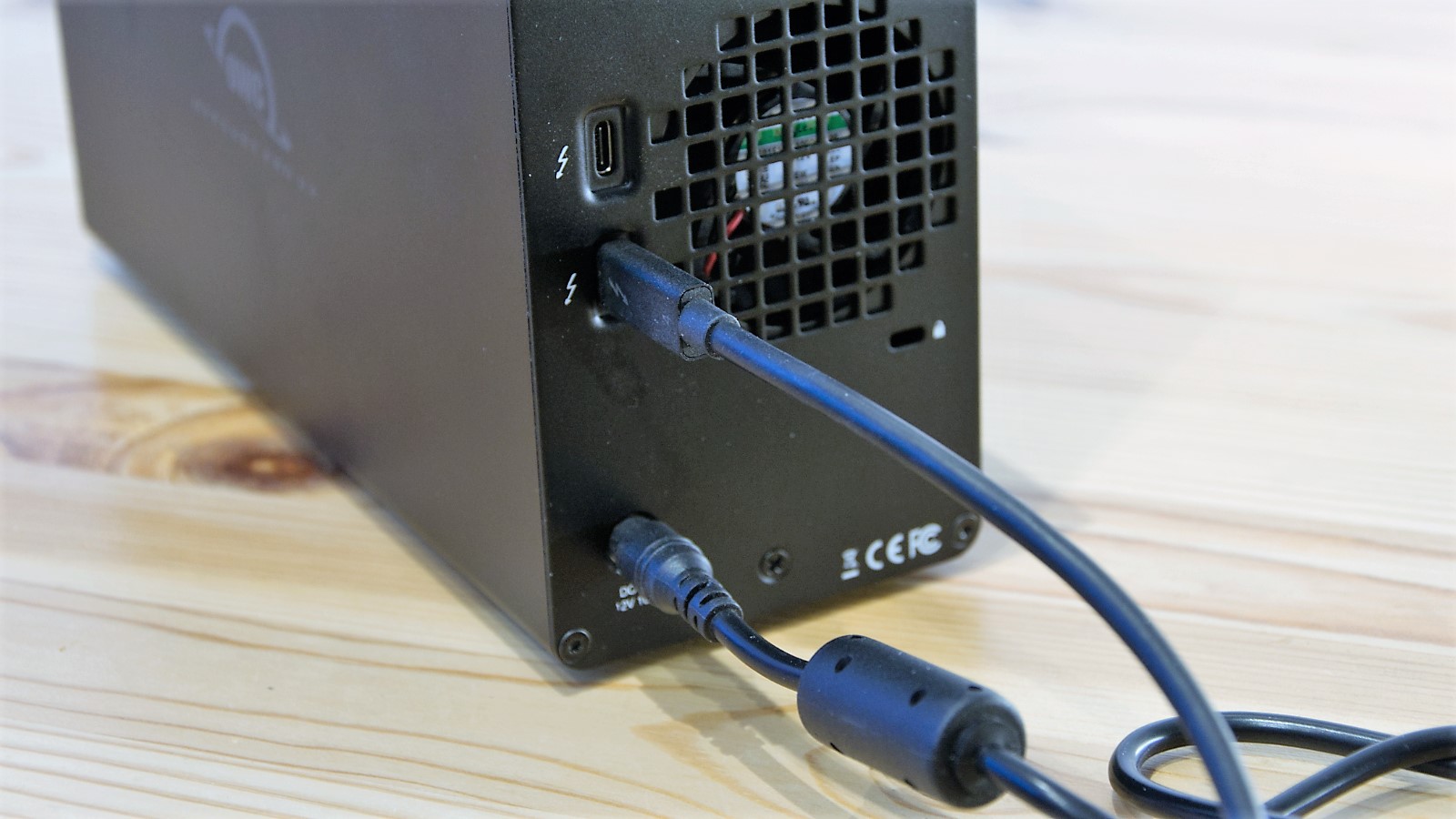
In use
As with most Thunderbolt hardware, using the Mercury Pro is mostly a matter of connecting it to a suitable port and then sanctioning that connection on the computer.
On our test PC, Windows drive management was initially used to format both the 960GB drives included to NTFS for benchmarking. Our review system had two Western Digital SN630 U.2 960GB drives, and once formatted, they appeared as any other external drives might.
Because of the possibility of having unflushed data in the system, it’s advisable to use the proper ejection methods when disconnecting the Mercury Pro rather than pulling the Thunderbolt or power cable out.
One thing that we tried next was to tell Windows to stripe the two drives using the software RAID functionality built into the OS, and that failed. We didn’t work out why, but it might be that the drives had been partitioned in a specific way that wouldn’t allow for the conversion to a dynamic structure needed for striping by the OS.
That said, the software RAID in Windows isn’t great, doesn’t deliver the performance impact you might expect, and therefore this wasn’t a huge disappointment.
You might not be surprised to learn that OWC has its branded software RAID options that undoubtedly do work, and we explored what using that offered.
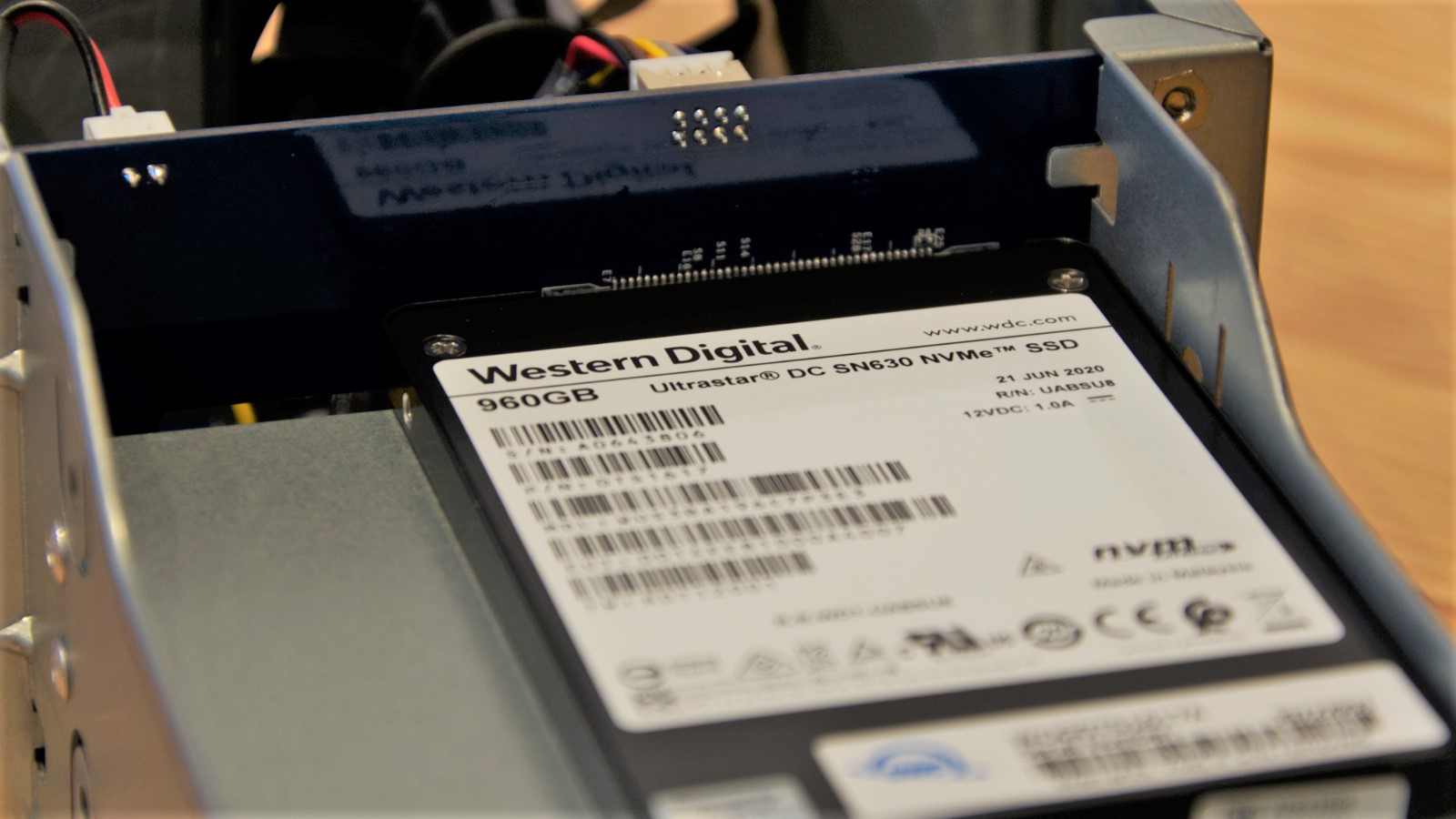
SoftRAID
Anyone with direct experience of software RAID on the PC will probably shudder at the thought of using it. Many have had this view coloured by the abysmal implementation Microsoft includes with Windows 10, which offers little other than the spectre of potential data loss enticing the unsuspecting to their inevitable doom.
For those willing to part with extra money, OWC has an alternative designed to work with all its external multi-drive solutions called SoftRAID.
That OWC doesn’t include any version of this with hardware is very disappointing. Without it, the two drives can’t be striped or mirrored at all.
To achieve those configurations requires SoftRAID Lite, priced at $49.99. And, this tool supports external drives and enclosures of any brand, not only those made by OWC.
Oddly, the version that OWC bundles with the SoftRAID enhanced Mercury Pro packages is SoftRAID XT, and that doesn’t support third-party enclosures. But it does support single drives that are made by other makers.
It’s a step up from the Lite version in that it comes with technical support and the ability to configure RAID 0,1, 4, 5 and 1+0. However, RAID 4, 5 and 1+0 are options on Mac only currently, so it’s a rather pointless investment for PC owners.
For those that choose the Mercury Pro models with SoftRAID XT, the cost difference is about $80, but buying this license for a barebones system is $118.99.
The top rung of this software ladder is SoftRAID Pro. It costs $249.99, and for that, you get the ability to work with any brand drives (like Lite), and volumes can be spread over multiple drives.
If you are unsure which, if any, of these that you might want, OWC offers 14-day fully functional trials on all flavours to help you make that assessment.
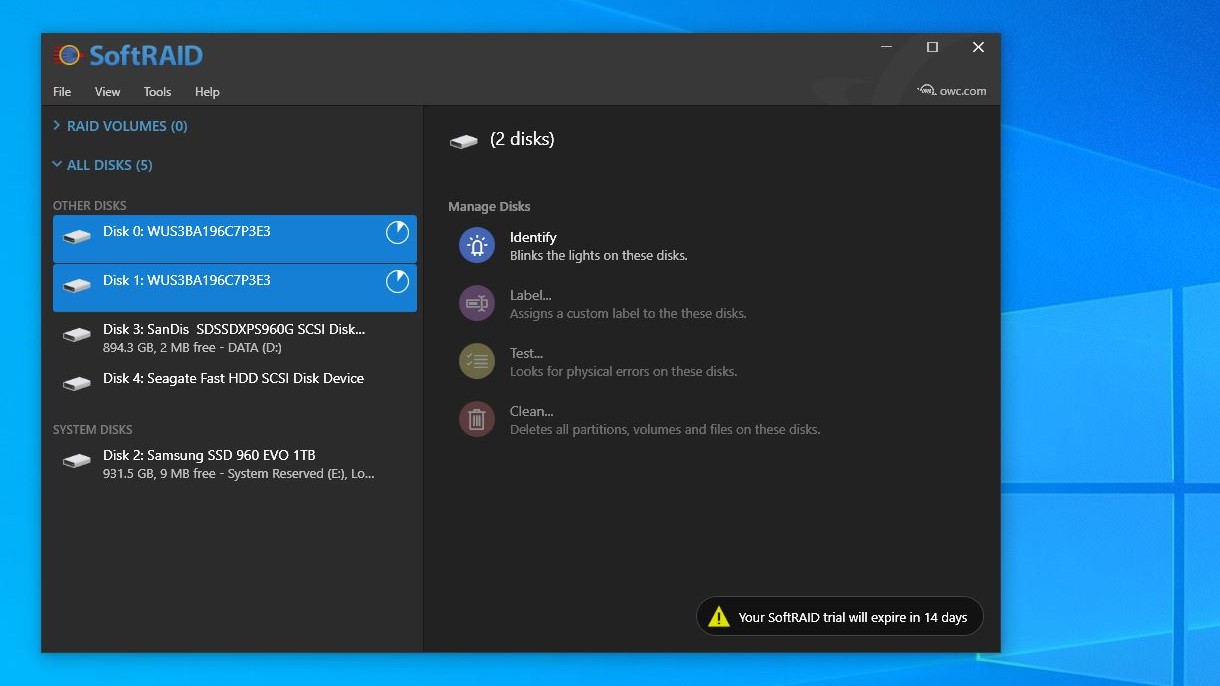
OWC promote SoftRAID as a much less expensive and more flexible approach to RAID, and both of those points are valid.
But, hardware RAID isn’t purely about being costly to use. It also offers the best levels of performance, and because the controller is independent of the computer, a system crash or errant application shouldn’t be able to corrupt the volume.
Some RAID controllers can hold unwritten data if the power is interrupted, and this isn’t a feature that software RAID can realistically deliver.
We should also mention that using striping, as the Mercury Pro is designed for, instantly doubles the statistical chance of losing the volume through hardware failure. And, having that volume over multiple devices introduces additional points of potential failure.
Yes, it will be faster to a point, but there is a trade-off in resilience or capacity.
Performance
There are some performance issues with the Mercury Pro U.2 Dual, and these are all to do with the bandwidth offered by Thunderbolt 3 and 4.
Using all the bandwidth of a Thunderbolt channel offers a theoretical cap of around 32.4 Gbps, or 4.05 GB/sec. But we’ve never seen an external drive of any technology with a speed that exceeded 2.8 GB/sec because the reality of Thunderbolt is less than the theoretical bandwidth.
The SSDs also have limitations, as the two 960GB Western Digital SN630 NVMe U.2 drives in our test system aren’t quick by NVMe standards. Each is theoretically capable of sequentially reading at 2.7 GB/sec and writing at 930 MB/s.
Obvious for reading alone, a single drive can take all the available bandwidth to achieve its potential, but that doesn’t happen. Instead, Thunderbolt limits each drive to about half of the total available bandwidth, unless the drive is chained, and then it would be even less.
In our testing, the sequential read speed of a single drive without SoftRAID was 1630MB/s, and writing was 1039MB/s. Compared with an internally mounted PCIe 4.0 M.2 NVMe that’s about a quarter of the speed you might see.
Using the 14-day trial version of SoftRAID XT, we then explored what performance gains can be achieved using both RAID 0 (stripe) and RAID 1(Mirror).
The RAID 0 striped option boosted read speed to 2756MB/s and write performance to 1915MB/s. Read performance is very close to the practical limit of Thunderbolt bandwidth, but well inside the performance envelope for the SN630. The other advantage of stripe mode is the combined drive is double the size, 1788GiB in this instance.
However, there is a trade here as should either drive have a technical issue, the data on both is effectively lost.
Mirroring using RAID 1 has the resilience to handle a drive failure, but it also halves the capacity. And, in our testing, speeds dropped to the equivalent of a single drive.

It’s worth considering that the SN630 was designed as a data centre SSD and not specifically for external drive storage devices, and connecting it via Thunderbolt negates much of its potential performance.
If we consider the option of using up to eight M.2 NVMe drives, that takes even greater potential performance and tries to feed it through a relatively narrow Thunderbolt channel.
Because Thunderbolt is the speed limiting factor, it would be possible to achieve the same overall speed to and from the PC combining SATA SSDs, at a fraction of the cost.
Competitors
The number of companies jumping in with both feet into the Thunderbolt U.2 market is understandably limited.
For those not insisting on a Thunderbolt connection, HighPoint has the SSD6540, a four U.2 drive solution that comes with a dedicated PCIe card to move up to 8GB/s between the host system and the drive box. At nearly £1,000 for the bare unit, this isn’t a cheap alternative, but the performance would be much better than the Thunderbolt connected Mercury Pro.
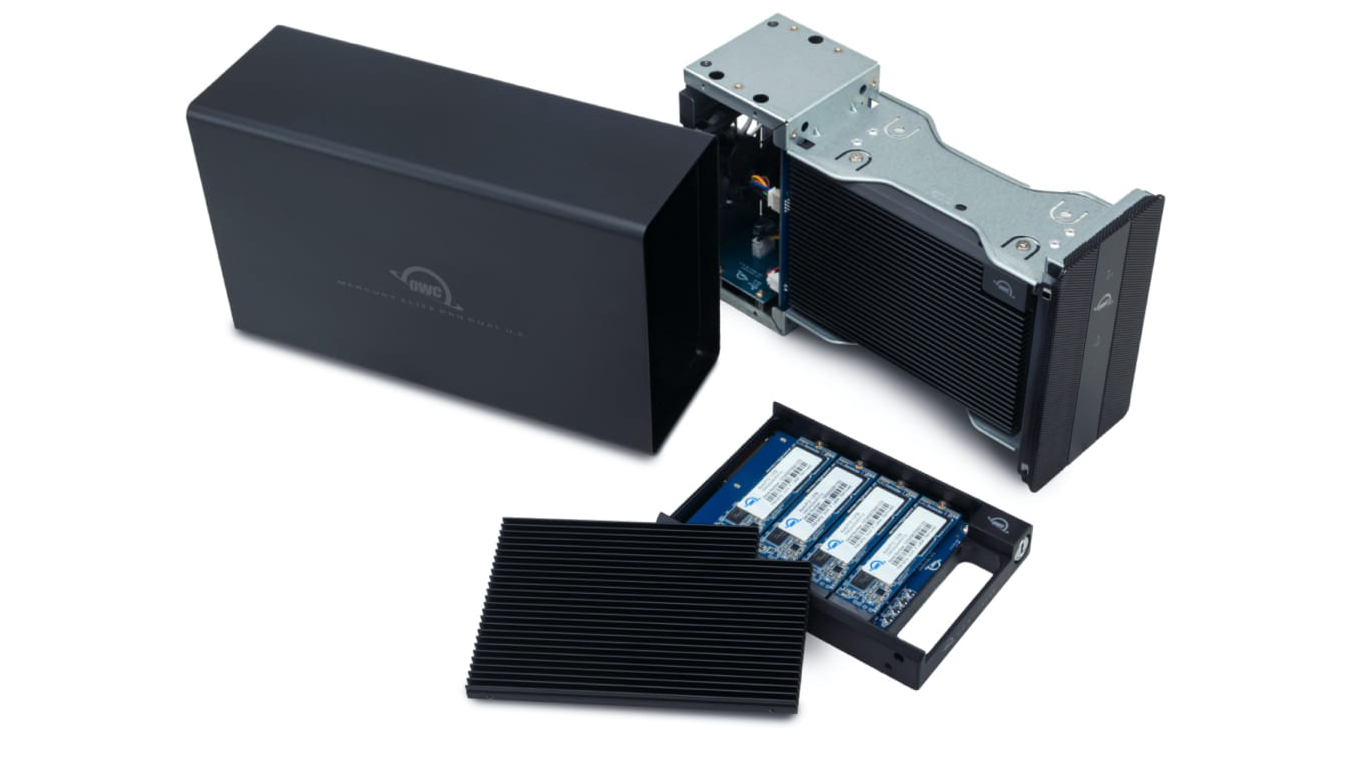
Final verdict
U.2 technology has been promoted as a magic wand that addresses the size limitations of M.2 drives. But, the released drives so far are only twice the size of M.2 sticks. We might presume that they’ll get bigger, but maybe M.2 capacity will also be impacted by the same chip developments?
The other problem with the U.2 concept is the price, which appears artificially inflated considering they don’t offer a performance advantage over M.2 since they use the same NVMe interface.
Our review Mercury Pro used 960GB WD SN630 U.2 drives that cost an eye-watering £306.75 each from a UK supplier. That’s almost triple the typical price of an M.2 NVMe drive for half the performance levels. The 8TB capacity WD SN630 costs $1,744.75 on Newegg, or $218 per TB, nearly double the cost of the 8TB M.2 Rocket Q drive made by Sabrent.
Other suppliers have more affordable options, but few are as cheap as M.2 NVMe drives.
OWC has done what it can to make the drives bundled with the Mercury Pro cheaper than retail. But for those buying a bare unit or planning to upgrade, this could be an expensive exercise.
To put it bluntly, for what performance is available and the high cost, these numbers don’t add up.
Maybe when U.2 becomes more established, the cost by TB and capacity sizes will ramp up to make the OWC Mercury Pro U.2 a more attractive option. But currently, it doesn’t offer any cost advantages over internally mounted M.2 NVMe. It’s merely easier to move around.
The largest capacity U.2 drives we’ve seen are the 15.36TB Samsung PM1733 and Intel SSD D5 P4326, only twice the size of M.2 NVMe at greater than double the price.
For the Mercury Pro to become more desirable, U.2 drives need to be 32TB or bigger and cost the same as M.2 drives of equivalent capacity. And when Thunderbolt 5 arrives, it needs to provide enough bandwidth that having NVMe drives on this bus doesn’t massively undermine their performance.
Unfortunately, none of that is likely to happen any time soon.
Mark is an expert on 3D printers, drones and phones. He also covers storage, including SSDs, NAS drives and portable hard drives. He started writing in 1986 and has contributed to MicroMart, PC Format, 3D World, among others.

